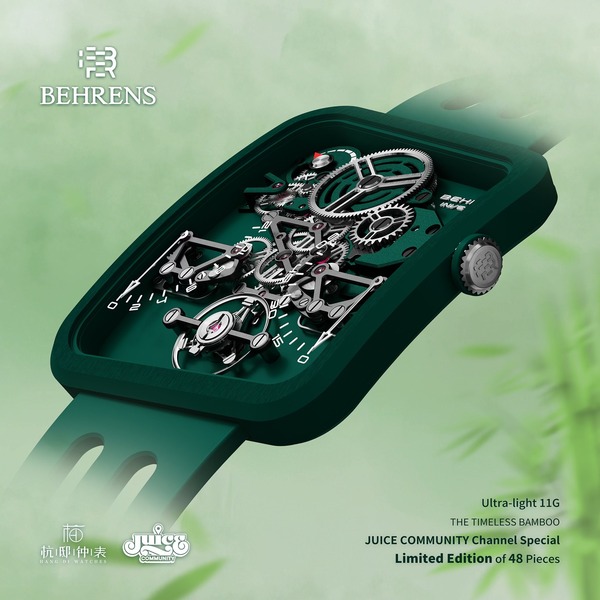Notifications
ALL BUSINESS
COMIDA
DIRECTORIES
ENTERTAINMENT
FINER THINGS
HEALTH
MARKETPLACE
MEMBER's ONLY
MONEY MATTER$
MOTIVATIONAL
NEWS & WEATHER
TECHNOLOGIA
TV NETWORKS
VIDEOS
VOTE USA 2026/2028
INVESTOR RELATIONS
COMING 2026 / 2027
ALL BUSINESS
COMIDA
DIRECTORIES
ENTERTAINMENT
FINER THINGS
HEALTH
MARKETPLACE
MEMBER's ONLY
MONEY MATTER$
MOTIVATIONAL
NEWS & WEATHER
TECHNOLOGIA
TV NETWORKS
VIDEOS
VOTE USA 2026/2028
INVESTOR RELATIONS
COMING 2026 / 2027
 Behrens Watches -
Feb 7 -
Shopping -
manual wind watches
-
337 views -
0 Comments -
0 Likes -
0 Reviews
Behrens Watches -
Feb 7 -
Shopping -
manual wind watches
-
337 views -
0 Comments -
0 Likes -
0 Reviews

Watches are more than just timekeeping devices; they are symbols of craftsmanship and heritage. Among the different types of mechanical watches, manual wind watches hold a special place for enthusiasts and collectors. These timepieces offer a unique experience, blending traditional watchmaking with a hands-on approach to keeping time.
Manual wind watches, also known as hand-wound watches, require regular winding by hand to keep them running. Unlike automatic watches, which wind themselves through wrist movement, these timepieces rely entirely on the wearer to power the mainspring. This process gives owners a deeper connection to their watches, making them appreciate the mechanics and precision involved.
The movement inside a manual watch is powered by a tightly wound mainspring. When the wearer winds the crown, the mainspring stores energy and gradually releases it, moving the gears and hands of the watch. The frequency of winding depends on the watch, but most manual watches need to be wound once a day to ensure accuracy and longevity.
While both manual and automatic watches rely on mechanical movements, there are key differences between them:
Winding Mechanism: Manual watches require hand-winding, whereas automatic watches use a rotor that winds the mainspring through wrist movement.
Case Design: Many manual watches have thinner cases since they lack a rotor, making them a preferred choice for dress watches.
User Experience: Hand-winding adds an interactive element that many collectors enjoy, while automatic watches offer more convenience.
The right watch strap enhances both the comfort and appearance of a timepiece. Some of the best watch straps for manual wind watches include:
Leather Straps: A classic choice, leather straps add elegance and sophistication to any watch.
Metal Bracelets: Durable and stylish, metal bracelets are ideal for those who prefer a more robust design.
NATO Straps: A casual and practical option, NATO straps provide comfort and versatility.
Rubber Straps: Best suited for sports watches, rubber straps offer durability and water resistance.
Selecting the best watch straps depends on the occasion, personal style, and the overall aesthetic of the timepiece.
Manual wind watches are highly valued by collectors and enthusiasts for several reasons:
Timeless Craftsmanship: These watches reflect the artistry and precision of traditional watchmaking.
Thinner and Elegant Design: Without a rotor, manual watches often have a sleeker profile.
Personal Connection: The act of winding a watch daily creates a sense of engagement and appreciation.
Longevity: With proper care, a well-maintained manual watch can last for generations.
To ensure the longevity of your timepiece, follow these maintenance tips:
Regular Winding: Wind your watch at the same time each day to maintain accuracy.
Gentle Handling: Avoid over-winding, as it can damage the mainspring.
Storage: Store your watch in a cool, dry place when not in use.
Professional Servicing: Have your watch serviced every 3–5 years to keep it in top condition.
Manual wind watches are more than just accessories—they are pieces of horological history. Their intricate craftsmanship, elegant design, and interactive experience make them a favorite among watch lovers. Whether you appreciate the charm of a classic timepiece or enjoy the ritual of winding a watch daily, owning a manual watch offers a timeless connection to the art of watchmaking.
